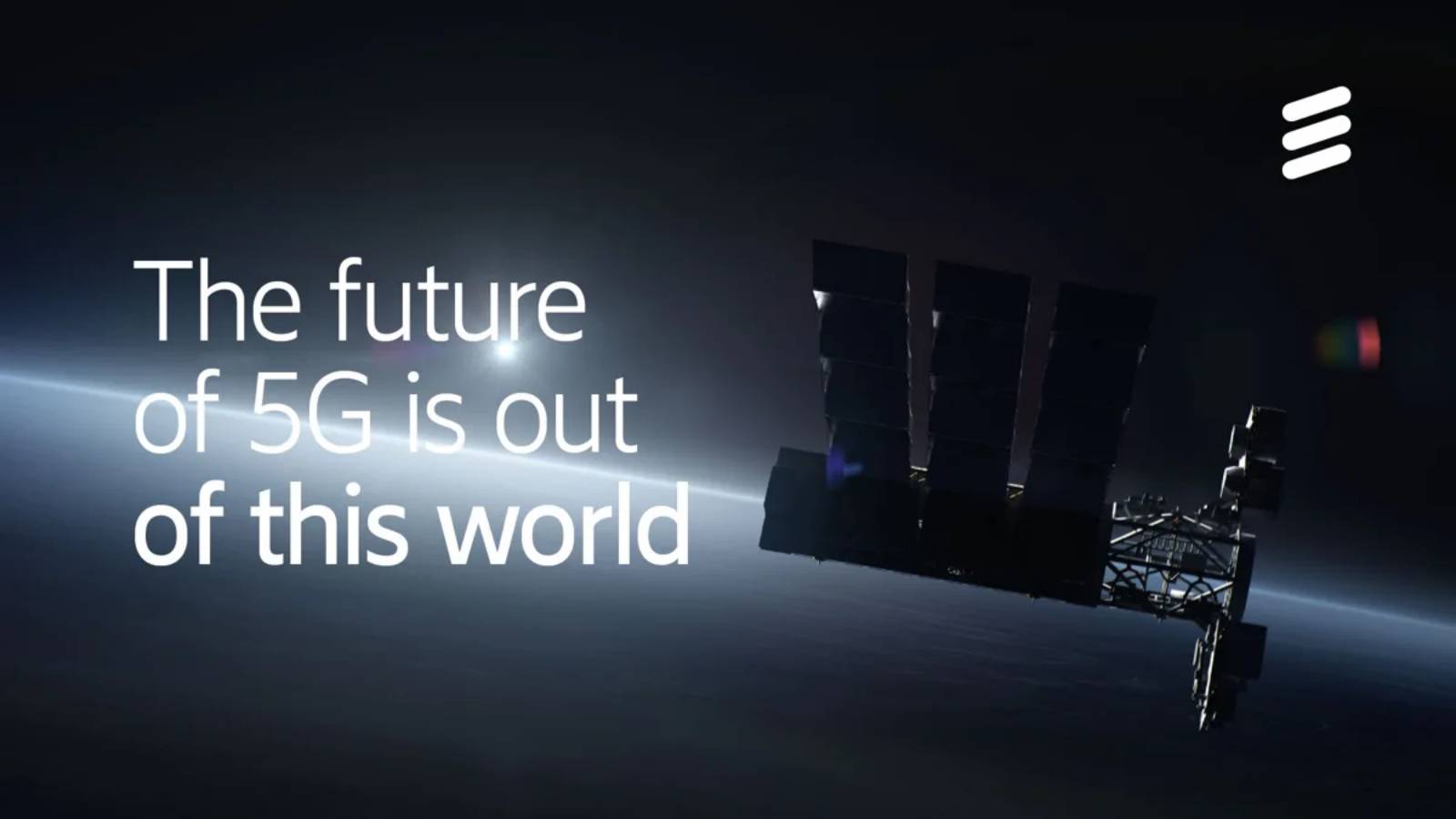Tehnologia 5G trebuia sa fie acum 2 ani de zile urmatorul mare salt tehnologic al omenirii, dar pandemia de Coronavirus a amanat planurile multor companii, mai putin pe cele ale Qualcomm, ericsson si Thales, care duc 5G-ul in spatiul cosmic pentru a imbunatati acoperirea pe Pamant, cu detalii mai jos.
Ericsson (NASDAQ: ERIC), Thales, lider mondial în aerospațiale, apărare, securitate și identitate digitală, și Qualcomm Technology, Inc. (NASDAQ: QCOM), lider mondial în inovație tehnologică wireless, au lansat un demers pentru a duce tehnologia 5G dincolo de granițele acestei lumi, cu ajutorul unei rețele de sateliți care orbitează Pământul.
- Activitatea are loc pe fondul aprobării rețelelor 5G non-terestre prin satelit (5G NTNs) de către organismul 3GPP care reglementează activitatea telecomunicațiilor la nivel mondial
- Rețelele 5G non-terestre ar putea asigura o acoperire 5G completă – inclusiv a zonelor care nu dispun în prezent de serviciile rețelelor terestre
- Într-o primă etapă proiectul din Franța constă în testarea și validarea rețelelor non-terestre 5G NTN pentru a câștiga un avantaj de pe urma ecosistemului satelitar și ICT
După o perioadă de cercetare detaliată care a inclus mai multe studii și simulări, cele trei companii vor parcurge o etapă de testare și validare a rețelelor 5G non-terestre pe telefoanele mobile.
Rezultatul poate însemna că un viitor telefon mobil 5G ar putea folosi conectivitatea 5G oriunde pe suprafața Pământului și ar putea asigura acoperire globală completă pentru servicii de date în bandă largă, inclusiv în zone acoperite în mod normal de rețele tradiționale de telefonie prin satelit, cu capabilități de conectare limitate.
Beneficiile conexiunii 5G prin sateliți de orbită joasă LEO (Low Earth Orbit) ar putea include acoperirea unor zone geografice extreme sau îndepărtate, aflate dincolo de mări și oceane și în locații neacoperite de rețeaua terestră.
O astfel de conectivitate largă ar dezvolta capabilitățile serviciilor de roaming 5G și ar facilita conectivitatea globală 5G în domenii precum transporturi, energie și sănătate.
Rețeaua spațială ar putea servi și ca soluție de rezervă pentru rețelele terestre în cazul unor pene majore sau dezastre.
Comunicațiile naționale guvernamentale ar putea fi un caz de folosință majoră, ținând cont de capabilitățile de securitate așteptate de la rețeaua non-terestră 5G, care ar permite întărirea securității și rezilienței rețelelor guvernamentale de siguranță națională și publică.
Erik Ekudden, Senior Vice-President și Chief Technology Officer Ericsson, spune: „Testarea și validarea colaborării dintre Ericsson, Thales și Qualcomm Technologies va fi un reper important în istoria comunicațiilor având în vedere că beneficiul suprem ar putea fi acela că oriunde te-ai afla pe Pământ – în mijlocul oceanului sau într-o pădure îndepărtată – va fi disponibilă o conexiune de vârf, sigură și accesibilă din punct de vedere al costurilor datorită conectivității 5G prin satelit și terestră.”
John Smee, Senior Vice President of Engineering la Qualcomm Technologies, Inc., declară: „Pentru ca 5G să-și îndeplinească promisiunea de a asigura o conectivitate permanentă este imperativ să poată livra și acoperire acolo unde nu există rețele celulare terestre, fie că este vorba despre zone de peste ocean sau izolate. Cercetările pe care le plănuim împreună cu Ericsson și Thales vor fi un pas important pentru transformarea în realitate a acestei tehnologii vitale. Suntem nerăbdători să vedem ce rezultate aduce această colaborare.”
Philippe Keryer, Executive Vice-President, Strategy, Research and Technology, Thales, spune: „Dislocarea rețelelor 5G reprezintă un pas în procesul de transformare a industriei telecom. Este o schimbare a jocului nu doar în ceea ce privește oportunitățile de business dar și în ceea ce privește abilitățile necesare pentru a conecta și proteja miliarde de oameni și lucruri. Thales se implică profund în această transformare prin diferitele activități ale grupului. Colaborarea în domeniul cercetării cu Ericsson și Qualcomm Technologies va confirma convingerea noastră că rețelele non-terestre 5G vor contribui la această revoluție și vor duce reziliența și securitatea rețelelor la alt nivel.”
Cooperarea
Testarea și validarea de către Ericsson, Thales și Qualcomm Technologies ca urmare a aprobării de către 3GPP, organismul global de reglementare în domeniul telecomunicațiilor, sprijinirea în premieră a rețelelor non-terestre.
Prin testare se urmărește validarea diferitelor componente tehnologice necesare rețelelor non-terestre 5G, inclusiv a telefoanelor mobile 5G, a sarcinii utile satelitare și a elementelor 5G la sol.
Această etapă are ca scop și validarea faptului că rețelele non-terestre 5G pot fi suportate de către un format de telefon mobil, ceea ce ar permite telefonului mobil 5G de mâine să devină cu adevărat un telefon prin satelit. Testele inițiale vor avea loc într-un mediu spațial simulat din sudul Franței, unde se află cele mai multe facilități ale industriei spațiale europene.
Ericsson intenționează să testeze un spațiu de stocare virtuală RAN 5G (vRAN), modificat să gestioneze semnale radio care se propagă (ce se întâmplă cu undele 5G care parcurg un vacuum și atmosfera Pământului) prin sateliții LEO de mare viteză.
Thales va verifica o sarcină utilă satelitară potrivită pentru dislocarea pe sateliții LEO, în timp ce Qualcomm Technologies plănuiește să furnizeze telefoane-test pentru a verifica dacă rețelele 5G NTN vor putea fi accesate de către viitoarele telefoane celulare 5G.
Experții vor folosi echipament de la sol pentru a simula propagarea undelor radio 5G și timpii scurși între un satelit echipat în orbită și conectarea unui celular 5G la rețeaua 5G de acces radio în diferite locuri pe suprafața pământului.
Ekudden mai declară: “Chiar dacă este devreme pentru a spune când va putea fi lansat pe orbită un satelit-prototip 5G pentru operațiuni reale, munca de înalt nivel tehnic de testare și validare terestră pe care o vom derula împreună – Ericsson, Thales și Qualcomm Technologies – este esențială pentru reușita acestui proiect.”
Tehnologia 5G NTN susținută de 3GPP va putea să beneficieze de un ecosistem amplu de produse și componente standardizate. Noua specificație permite și includerea tehnologiilor NTN în dispozitive 5G, oferind furnizorilor de tehnologie posibilitatea de a atinge ușor și rapid compatibilitatea 5G NTN pentru toate dispozitivele.






















